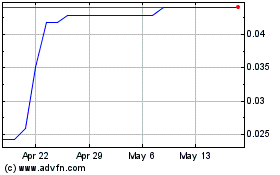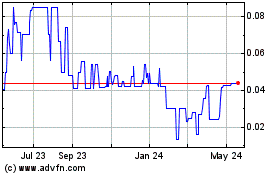Burzynski Research Institute Presents Positive Results From Phase IITrials of ANP for Inoperable Brainstem Glioma at the Cong...
May 11 2009 - 12:19PM
Business Wire
The Burzynski Research Institute, Inc. (BRI) announced today
that it made three presentations of the results of phase II trials
and mechanism of action data on it�s antineoplaston A10 and
antineoplaston AS2-1 therapy (ANP). These findings were discussed
at the 3rd Quadrennial Meeting of the World Federation of
Neuro-Oncology in Yokohama, Japan.
In phase II studies, a total of eighty evaluable patients with
advanced non-operable brainstem glioma (BSG) have been treated with
ANP administered intravenously through an ambulatory infusion pump.
Most of the patients (79%) were children, and 63% of all patients
failed prior radiation therapy and/or chemotherapy. Due to low
performance status, 52 patients were treated under Special
Exception. The median duration of treatment was 5 � months. ANP was
well-tolerated with easy manageable side effects of fatigue, skin
rash and electrolyte abnormalities and no chronic toxicities. In
the study group, 32% of patients have complete and partial
responses, 43% have stable disease and 25% developed progression.
Overall survival is 36% at 2 years and 25% at 5 years. These
results compared favorably to radiation therapy and chemotherapy
(Mandell, et al. 1999, 7% overall survival at 2 years and 0% at 5
years), but should be confirmed in phase III trials scheduled to
begin in 2009.
The remarkable response of one of the patients who was treated
on the study protocol was the subject of the second presentation.
The patient is currently a 10 � year-old female who, as a
six-week-old infant was diagnosed with BSG on August 12, 1998. The
tumor was inoperable and the pediatric oncology service felt that
chemotherapy as well as radiation therapy would not be an option.
On October 14, 1998, she began intravenous infusions of ANP, which
were discontinued on June 8, 2000. She achieved complete response
in February 1999 and continues to be tumor free and lives a normal
life since then.
The third presentation described new data on the molecular
mechanism of action of ANP and concentrated on the most important
findings from the study of the effect of active ingredients of ANP
on the entire genome of malignant glioma (glioblastoma). Gene
expression study and pathway analysis revealed the effect of ANP on
94 genes vital for the growth of malignant brain tumors. The study
indicated that major metabolic pathways such as glycolysis were
down-regulated. Many pro-apoptotic genes such as CASP3, CASP4,
several TNFRs, TRF3 were up-regulated. The cell cycle was
disrupted, and major checkpoint proteins were suppressed leading to
apoptosis of glioblastoma cells. The Minichromosome Maintenance
Complex (MCM) proteins are highly expressed in malignant cells and
are promising targets for anticancer drugs. All six genes of the
MCM were markedly suppressed by ANP. In conclusion, ANP inhibited
MCM complex in malignant glioma, which may play an important role
in control of tumor growth.
�These preclinical and clinical results are very encouraging,
since they describe a positive ANP effect on one of the worst
malignancies in the entire oncology field; they strongly support
phase III trials scheduled to start later this year,� said
Stanislaw R. Burzynski, M.D., Ph.D., Chairman and CEO of BRI.
Burzynski Research Institute, Inc. (BZYR) is a biopharmaceutical
company committed to developing treatment for cancer based on
genomic and epigenomic principles. Research and development efforts
are focused on basic research and Phase III clinical trials.
Forward-looking statements in this release are made pursuant to
the safe harbor provisions of the federal securities laws.
Burzynski Research Institute, Inc. cautions investors not to place
undue reliance on the forward-looking statements contained in this
press release. Information contained in forward-looking statements
is based on current expectations and is subject to change, and
future events may differ materially from those discussed herein due
to a number of factors, including, but not limited to, risks and
uncertainties related to BRI's ability to obtain regulatory
approval for Antineoplastons A10 and AS2-1, risks associated with
BRI�s ability to raise sufficient capital from the development of
its technology towards commercialization, and other risks described
in BRI�s periodic reports filed with the Securities and Exchange
Commission. BRI does not undertake to update any such forward-
looking statements or to publicly announce developments or events
relating to the matters described herein.
Burzynski Research Insti... (PK) (USOTC:BZYR)
Historical Stock Chart
From Jan 2025 to Feb 2025

Burzynski Research Insti... (PK) (USOTC:BZYR)
Historical Stock Chart
From Feb 2024 to Feb 2025
